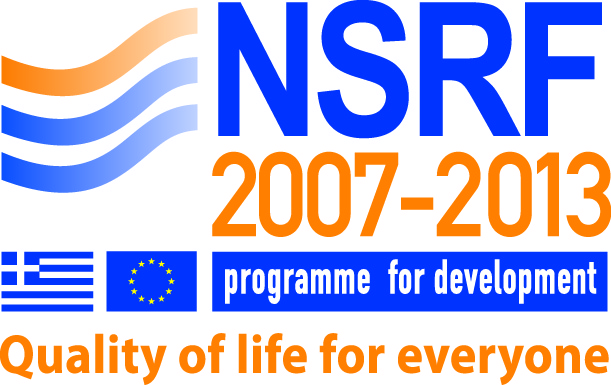Please use this identifier to cite or link to this item:
https://olympias.lib.uoi.gr/jspui/handle/123456789/39575Full metadata record
| DC Field | Value | Language |
|---|---|---|
| dc.contributor.author | Χορόζογλου, Ασημένια | |
| dc.date.accessioned | 2025-10-24T10:20:27Z | - |
| dc.date.available | 2025-10-24T10:20:27Z | - |
| dc.identifier.uri | https://olympias.lib.uoi.gr/jspui/handle/123456789/39575 | - |
| dc.rights | Attribution-NonCommercial-NoDerivs 3.0 United States | * |
| dc.rights.uri | http://creativecommons.org/licenses/by-nc-nd/3.0/us/ | * |
| dc.subject | Εναλλακτική και επαυξητική επικοινωνία | el |
| dc.subject | Διαταραχή αυτιστικού φάσματος | el |
| dc.title | Η Χρήση της εναλλακτικής και επαυξητικής επικοινωνίας (ΕΕΕ) στα μη-λεκτικά άτομα με διαταραχή αυτιστικού φάσματος τα τελευταία 20. | el |
| dc.title | The use of alternative and augmentative Communication in Non-verbal Individuals with Autism Spectrum Disorder Over the Last 20 Years. | en |
| heal.type | bachelorThesis | - |
| heal.type.en | Bachelor thesis | en |
| heal.type.el | Προπτυχιακή/Διπλωματική εργασία | el |
| heal.classification | Λογοθεραπεία | - |
| heal.dateAvailable | 2025-10-24T10:21:27Z | - |
| heal.language | el | - |
| heal.access | free | - |
| heal.recordProvider | Πανεπιστήμιο Ιωαννίνων. Σχολή Επιστημών Υγείας. Τμήμα Λογοθεραπείας | el |
| heal.publicationDate | 2025 | - |
| heal.abstract | Οι Διαταραχές του Αυτιστικού Φάσματος (ΔΑΦ) αποτελούν μια ομάδα νευροαναπτυξιακών διαταραχών με σημαντικές δυσκολίες στην κοινωνική επικοινωνία και περιορισμένα επαναλαμβανόμενα μοτίβα συμπεριφοράς. Η αποτελεσματική επικοινωνία είναι ιδιαίτερα κρίσιμη για τα μη-λεκτικά παιδιά με ΔΑΦ, καθώς η έλλειψή της επηρεάζει σημαντικά την καθημερινή τους λειτουργικότητα και την ποιότητα ζωής τους. Σκοπός: Η ανασκόπηση της βιβλιογραφίας των τελευταίων 20 ετών σχετικά με την εφαρμογή και αποτελεσματικότητα των Εναλλακτικών και Επαυξητικών Μέσων Επικοινωνίας (ΕΕΕ) σε παιδιά με Διαταραχή Αυτιστικού Φάσματος. Μεθοδολογία: Η μεθοδολογική προσέγγιση βασίστηκε στην ανασκόπηση μελετών στις ηλεκτρονικές βάσεις δεδομένων Pubmed και SCOPUS. Η επιλογή των μελετών επικεντρώθηκε κυρίως στα συστήματα, PECS, Makaton και τη χρήση tablet που εφαρμόστηκαν σε παιδιά με αυτισμό, ενώ η ανάλυση επικεντρώθηκε στην αποτελεσματικότητα των συστημάτων και τα ατομικά χαρακτηριστικά που επηρεάζουν την επιτυχία της παρέμβασης. Αποτελέσματα: Τα αποτελέσματα ανέδειξαν το PECS ως το πλέον διαδεδομένο και αποτελεσματικό μέσο, με εφαρμογή σε πάνω από το 50% των περιπτώσεων, κυρίως σε προσχολική και σχολική ηλικία. Στις ηλικίες αυτές καταγράφηκε σαφής βελτίωση στην επικοινωνία και μείωση των δυσλειτουργικών συμπεριφορών. Αντίθετα, συστήματα όπως το Proloquo2Go και η απλή χρήση tablets παρουσίασαν μικτά αποτελέσματα, υπογραμμίζοντας την ανάγκη εξατομικευμένης προσέγγισης. Σημαντική έλλειψη δεδομένων εντοπίστηκε για το Makaton. Η ανάλυση υποδηλώνει ότι η ένταξη των εναλλακτικών μέσων επικοινωνίας γίνεται συχνά σε προχωρημένο στάδιο, γεγονός που ενδέχεται να περιορίζει τα οφέλη της παρέμβασης. Συμπεράσματα: Συνολικά, η μελέτη επιβεβαιώνει ότι η έγκαιρη, εξατομικευμένη και διεπιστημονική προσέγγιση στα προγράμματα ΕΕΕ μπορεί να βελτιώσει σημαντικά την επικοινωνία, την κοινωνική αλληλεπίδραση και τη λειτουργικότητα των μη λεκτικών παιδιών με ΔΑΦ, ενισχύοντας παράλληλα την ποιότητα ζωής τους. | el |
| heal.abstract | Autism spectrum disorders (ASD) are a group of neurodevelopmental disorders with significant difficulties in social communication and limited repetitive patterns of behavior. Effective communication is particularly critical for non-verbal children with ASD, as its lack significantly affects their daily functioning and quality of life. Purpose: To review the literature of the last 20 years on the application and effectiveness of Alternative and Augmentative Communication in children with Autism Spectrum Disorder. Methodology: The methodological approach was based on the review of studies in the electronic databases Pubmed and SCOPUS. The selection of studies focused mainly on the systems, PECS, Makaton and tablets that were applied to children with autism, while the analysis focused on the effectiveness of the systems and the individual characteristics that influence the success of the intervention. Results: The results showed PECS to be the most widespread and effective tool, applied in over 50% of cases, mainly in preschool and school age. At these ages, a clear improvement in communication and a reduction in dysfunctional behaviors were recorded. In contrast, systems such as Proloquo2Go and simple tablets presented mixed results, highlighting the need for an individualized approach. A significant lack of data was identified for Makaton. The analysis suggests that the integration of alternative means of communication is often done at an advanced stage, which may limit the benefits of the intervention. Conclusions: Overall, the study confirms that a timely, individualized and interdisciplinary approach to ASD programs can significantly improve the communication, social interaction and functionality of non-verbal children with ASD, while enhancing their quality of life. | en |
| heal.advisorName | Ζαροκανέλλου, Βασιλική | el |
| heal.committeeMemberName | Ταφιάδης, Διονύσιος | el |
| heal.committeeMemberName | Νεραντζίνη, Μιχαέλα | el |
| heal.academicPublisher | Πανεπιστήμιο Ιωαννίνων. Σχολή Επιστημών Υγείας. Τμήμα Λογοθεραπείας | el |
| heal.academicPublisherID | uoi | - |
| heal.numberOfPages | 79 σ. | - |
| heal.fullTextAvailability | true | - |
| Appears in Collections: | Πτυχιακές Εργασίες Προπτυχιακών Φοιτητών | |
Files in This Item:
| File | Description | Size | Format | |
|---|---|---|---|---|
| ΧΟΡΟΖΟΓΛΟΥ_SLT_2025.pdf | Πτυχιακή εργασία | 1.97 MB | Adobe PDF | View/Open |
This item is licensed under a Creative Commons License





